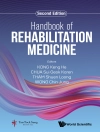Drug discovery and development is a very complex, costly, and ti- consuming process. Because of the uncertainties associated with predicting the pharmacological effects and the toxicity characteristics of new chemical entities in man, their clinical development is quite prone to failure. In recent years, phar- ceutical companies have come under increasing pressure to introduce new blockbuster drugs into the marketplace more rapidly. Companies have responded to these pressures by introducing new technologies and new strategies to expedite drug discovery and development. Drug discovery and development have traditionally been divided into three separate processes (i. e. , discovery research, preclinical development, and clinical development) that ideally should be integrated both organizationally and functionally. Instead, separate and distinct discovery research, preclinical development, and clinical development divisions were created within many companies during the 1980s and 1990s, Because of their isolation, scientists in the discovery research divisions often were advancing drug candidates into preclinical development that had marginal drug-like properties. For the purpose of this presentation, “drug-like” properties refer to the molecule’s physicochemical, absorption-distribution-metabolism-excretion (ADME), and toxicological properties. Lacking optimal drug-like properties often caused these drug candidates to fail in preclinical or clinical development.
Cuprins
Strategic Use of Preclinical Pharmacokinetic Studies and In Vitro Models in Optimizing ADME Properties of Lead Compounds.- Role of Mechanistic Transport Studies in Lead Optimization.- Metabolic Activation-Role in Toxicity and Idiosyncratic Reactions.- Case History — Use of ADME Studies for Optimization of Drug Candidates.- Solubility, Solubilization and Dissolution in Drug Delivery During Lead Optimization.- Lipid-based Systems, Drug Exposure and Lead Optimization.- Biopharmaceutics Modeling and the Role of Dose and Formulation on Oral Exposure.- Application of Physicochemical Data to Support Lead Optimization by Discovery Teams.- Computational Models Supporting Lead Optimization in Drug Discovery.- Prodrug Strategies for Improving Drug-Like Properties.- The Application of Multivariate Data Analysis to Compound Property Optimization.- Case History: Toxicology Biomarker Development Using Toxicogenomics.- Predicting Idiosyncratic Drug Reactions.- Elementary Predictive Toxicology for Advanced Applications.- The Application of PK/PD Modeling and Simulations During Lead Optimization.- Early Preclinical Evaluation of Brain Exposure in Support of Hit Identification and Lead Optimization.- Optimizing Biomarker Development for Clinical Studies at the Lead Optimization Stage of Drug Development.- The Relevance of Transporters in Determining Drug Disposition.












